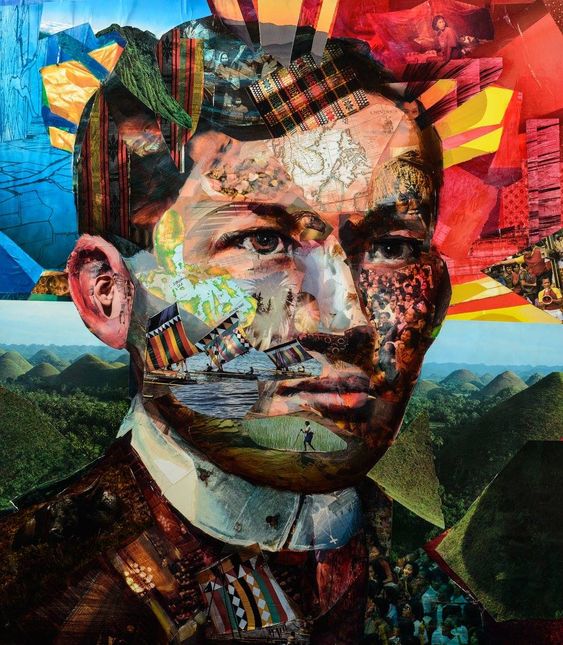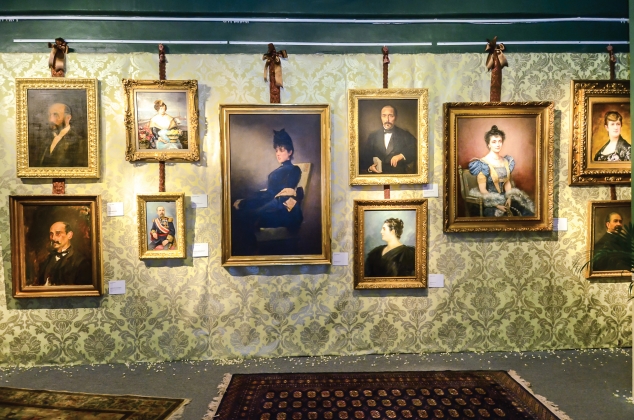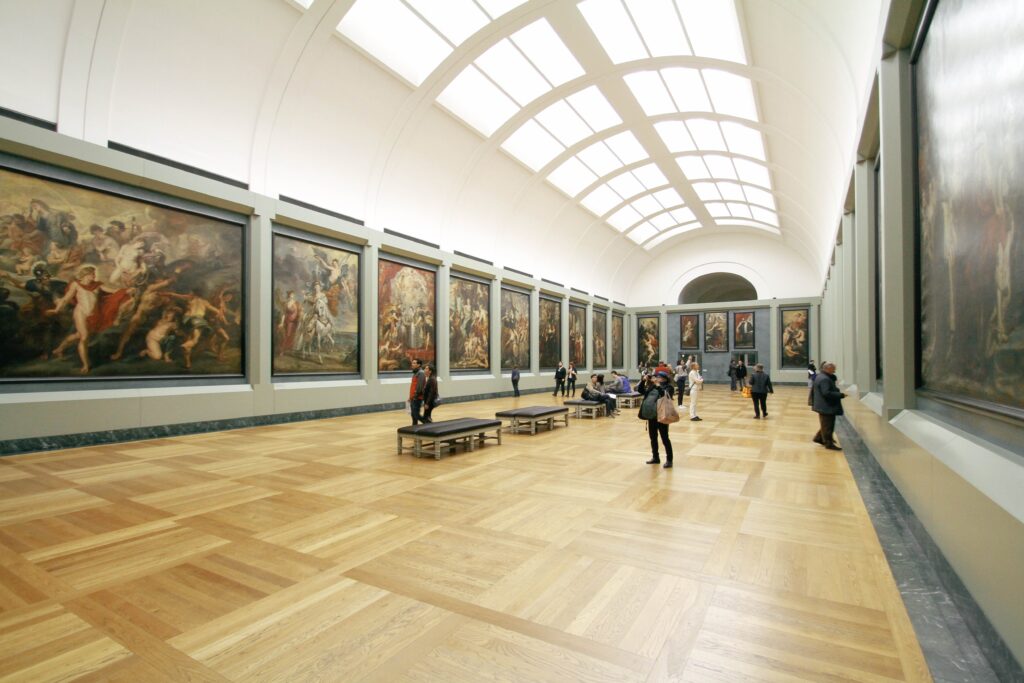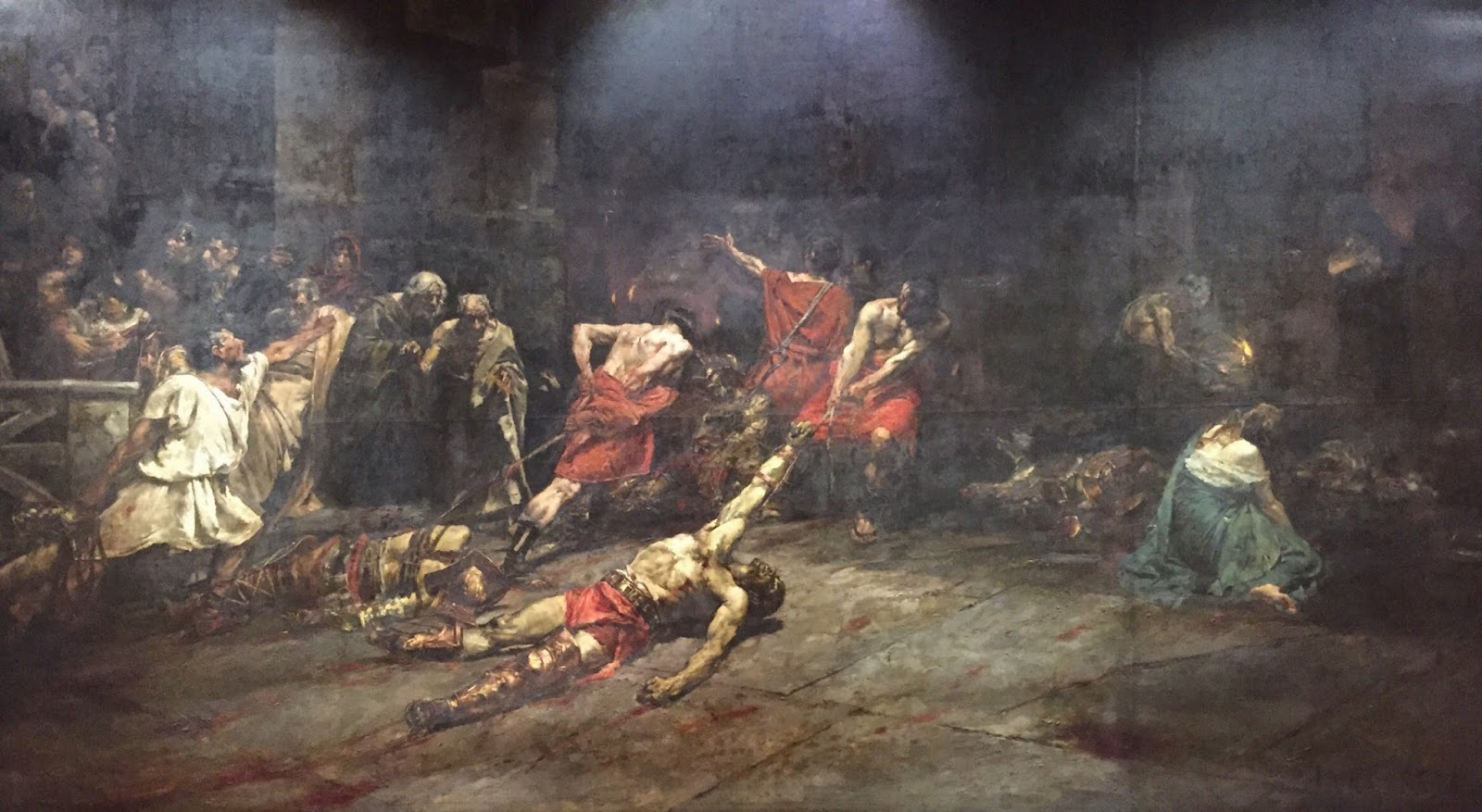[Spoliarium by Juan Luna]1
The Philippine art scene has always been strong in the country- producing renowned artists from the time of Juan Luna and until this day where the likes of BenCab have gained global popularity. Emerging contemporary artists and even well-established ones have grown their own following through the fast growth of social media. Nowadays, collectors and art enthusiasts have unlimited access to art at their fingertips. Likewise, there are almost a hundred galleries around the country, with multiple major art fairs happening throughout the year. In fact, several galleries did not see a decline in sales during the pandemic, while some even recorded the same income.2 Likewise, those in the music and film industries have continued to create and release their works as access to distribution widened through various online platforms. Pitches to producers abroad have been accessible through emails and Zoom calls– truly, now is such an inclusive time to be in the art scene!
While creating art is truly liberating and, for many, hugely profitable,- there are several decades-old laws that may be unfamiliar to artists. After all, creating the art and being on top of its business side are two different tasks that could feel unnatural to artists. One may find deep satisfaction coming up with pieces that the world could see and appreciate but what some artists may not know is that their financial rights over their work does not end on their art’s first paycheck.
“What?! I can still make money eventually even after my music has been paid for by the broadcast network?” An artist would be surprised to know that the answer is yes!
Fortunately, the Philippines has laws crafted specifically for the protection of artists and their works. One of the rights available to artists is droit de suite, this article is here to help you know more about this specific right.
UNDERSTANDING DROITE DE SUITE
Droit de suite is the French term for “resale right”, or the right of artists or their heirs to receive a share from the resale value of their work in case of a subsequent sale or lease 3. It is not uncommon for the value of an artist’s work to increase over time and for that work to be sold again or leased, and as trade increases for each artwork, the artist shall remain compensated throughout time. This means that as the art value goes up, the artist may continue to reap benefits from his work.
In the Philippines, the resale right is embodied in Section 200 of the Intellectual Property Code. It is there to ensure that artists or their heirs benefit from the sale or lease of their works even after the first disposition by receiving a share, or what we call a “resale royalty”. An artist’s resale rights exist during his/her lifetime. And guess what, this extends for another 50 years after his/her death. If the work is made by two or more artists, the resale right belongs to all of them as co-owners and protects them from the moment of creation and for another 50 years after the death of the last surviving artist4. The law seeks to take care of the artist and his next generation when you think about it.
WORK AND ARTISTS COVERED

The resale right covers Filipinos and citizens of other countries who are members of the Berne Convention, which have resale rights incorporated in their national copyright laws. The works protected include original works of painting, sculpture, and manuscript 6.
On the other hand, printings, etchings, engravings, works of applied art, and works of a similar kind wherein artists earn from the proceeds of reproductions are not covered7. Reproduction of original works are not covered- this means postcards or shirts using original paintings will not be paying a share to the artists.
If a private individual subsequently sells or leases the work directly to another private individual without the assistance of an art market professional, the resale right also does not apply. This means that if a sale happens privately between individuals (no transfer of certificates or no receipts issued), then it will not be paying a share to the artists.
A direct subsequent sale or lease by a private individual to a public museum is also not covered.
An art market professional, sometimes called a “professional party” or an “intermediary”, is an individual or an entity engaged in the business of dealing with artworks. It may refer to places where buying and selling of art happens such as auction houses, art galleries, art salerooms, or any art dealer in general. A public museum, on the other hand, is an institution with a permanent collection of artworks, existing for the purposes of taking care of the permanent collection and educating the public about it. Museums do not sell art.
resale royalty rates
The following rates determine the amount that will go to the artist or his/her heirs as their resale royalty in case of a subsequent sale or lease 8:
| Gross Selling Price (PhP) | Percentage Amount |
| Up to 150,000.00 | 5% |
| 150,000.01 – 350,000.00 | 4% |
| 350,000.01 – 600,000.00 | 3% |
| 600,000.01 – 1,000,000.00 | 2% |
| 1,000,000.01 – 2,000,000.00 | 1.5% |
| 2,000,000.01 – above | 1% |
If the work is sold in a different currency, the price shall be converted into Philippine Peso based on the Bangko Sentral ng Pilipinas reference rate prevailing on the contract date.
FIRST DISPOSITION AND SALE
When an artist transfers ownership of his/her work for the first time, it may or may not be for a fee. It can either be a transfer from the artist to the person who commissioned the work, or to his/her heirs by way of succession. It can also be the disposal of the work for purposes of administering the artist’s estate, or for the realization of his/her estate in case of bankruptcy (let us hope this never has to happen!). All these scenarios are considered “first disposition” or “first transfer of ownership”.

A sale or lease after the first disposition is called “resale”. This is when the law on resale right comes in handy. To ensure that artists get to enjoy their resale right, certain safeguards were implemented and need to be followed when making a subsequent sale or lease. They are the following:
- The subsequent sale or lease must involve an art market professional;
- In case of lease, the same must be for a period of more than one (1) year and with a written contract; and
- The work must be enrolled and registered in the Registry of Qualified Works.
HOW RESALE RIGHTS ARE MANAGED
Management of the resale right includes the monitoring and collection of the resale royalty. There are two ways to do this – collective management or individual management. Collective management means that there is a collective management organization which will do the monitoring and collection on behalf of the artist, in exchange for a fixed fee or a percentage of the resale royalty. An artist can also do all of this him/herself through individual management.
the local art scene

Art galleries often hold art exhibits to feature the works of various local and international artists. Their relationship with the artists is of a give and take nature – the art galleries become an avenue for artists to display their works, market and eventually sell them, the artists then create the works that shall be displayed, help promote their show by way of inviting their followers and network.
Once a work is launched through an exhibit, the gallery and artist agree on a price. Over time, the value of the work may increase as the artist establishes his/her practice in the world of arts. The work, whether in the hands of a collector or still in the gallery, may continually rise as the artist rises in value too. The first sale usually takes place in art galleries, during art fairs, or through the own efforts of the artist. Nowadays, many artists are on social media and they are able to reach out to art enthusiasts and collectors who notice them and might want to acquire their work. For most artists, as a courteous practice, the sale happens through the gallery that represents the artists. This also protects an artist’s long-term relationship with galleries.
The subsequent sale or lease of the work is where it gets tricky. Some works are resold at auction houses and art galleries, but some are sold through private transactions. At this point, it is important for an artist to know his/her resale rights. As mentioned above, an artist has the right to a percentage of the revenue of the resale except for transactions that were mentioned above that are excluded from the law.
Truly, being able to witness an artist’s perspective through layers of color, texture, shapes and curves, hearing the subtle and loud messages of his/her works, is something special. It is not a surprise why people love collecting art, or for some, understanding the growing value in investing in art. But while we bask in the beauty or art, it will not hurt to keep in mind the rights of artists and invoke them if need be. After all, so much heart and tears have gone into creating each piece, artists deserve to receive what is rightfully theirs.
Besides the appreciation for beauty, there is a lot of commercial value in the production, selling and trading of artworks. If you are in this industry already or if you plan to start now, it will be to your advantage to be informed and protected by having the proper legal counsel and legal framework in place. Many of the stories of artists being taken advantage of happen because of lack of preparation in the business and legal aspects, we can help you maximize and protect you and the commercial benefits of your work for you and your next generation.
FOOTNOTES
- [Spoliarium by Juan Luna], [Photograph] https://commons.wikimedia.org/wiki/File:Spoliarium_by_Juan_Luna_High_Res.jpg
- Potenciano, Toni, (21 March 2021) [People Are Still Selling and Buying Art- even through Viber], [Article] https://www.cnnphilippines.com/life/culture/arts/2021/5/21/buying-art-through-viber.html
- (6 June 1997) [Id. Sec. 2(m), Rule I. of Republic Act no. 8293 An Act Prescribing the Intellectual Property Code and Establishing the Intellectual Property Office, Providing for Its Power and Functions and for Other Functions], [Law] https://www.officialgazette.gov.ph/1997/06/06/republic-act-no-8293/
- (3 July 2020) [Implementing Rules and Regulations on Resale Rights, IPOPHL Memorandum Circular No. 2020-023, Sec. 2(l), Rule I.], [Memorandum] https://drive.google.com/file/d/17evcmv4mIz5zyTOJcdkJUxi4EUd8s_Zm/view
- Huntington Jeff [Great Rizal Collage], [Photograph] https://www.coursehero.com/file/81246743/Great-Rizal-Collage-Art-by-Jeff-Huntingtonjpg/
- (6 June 1997) [Id. Sec. 5, Rule I. of Republic Act no. 8293 An Act Prescribing the Intellectual Property Code and Establishing the Intellectual Property Office, Providing for Its Power and Functions and for Other Functions], [Law] https://www.officialgazette.gov.ph/1997/06/06/republic-act-no-8293/
- (6 June 1997) [ Id. Sec. 4, Rule I. Republic Act no. 8293 An Act Prescribing the Intellectual Property Code and Establishing the Intellectual Property Office, Providing for Its Power and Functions and for Other Functions], [Law] https://www.officialgazette.gov.ph/1997/06/06/republic-act-no-8293/
- (6 June 1997) [ Id. Sec. 14.1, Rule III. Republic Act no. 8293 An Act Prescribing the Intellectual Property Code and Establishing the Intellectual Property Office, Providing for Its Power and Functions and for Other Functions], [Law] https://www.officialgazette.gov.ph/1997/06/06/republic-act-no-8293/
- Sorilla, Franz IV, (2016 July 05) [“Filipinos in Gilded Age, ”Leon Gallery Highlights 19th Century Filipino Art Masterpieces] {Photograph] https://www.tatlerasia.com/culture/arts/leon-gallery-highlights-19th-century-filipino-art-masterpieces?gallery=true&slide=0&type=carousel
- Riccardo (2015 November 16) [Exhibit Painting Display], [Photograph] https://www.pexels.com/photo/exhibit-painting-display-69903/

